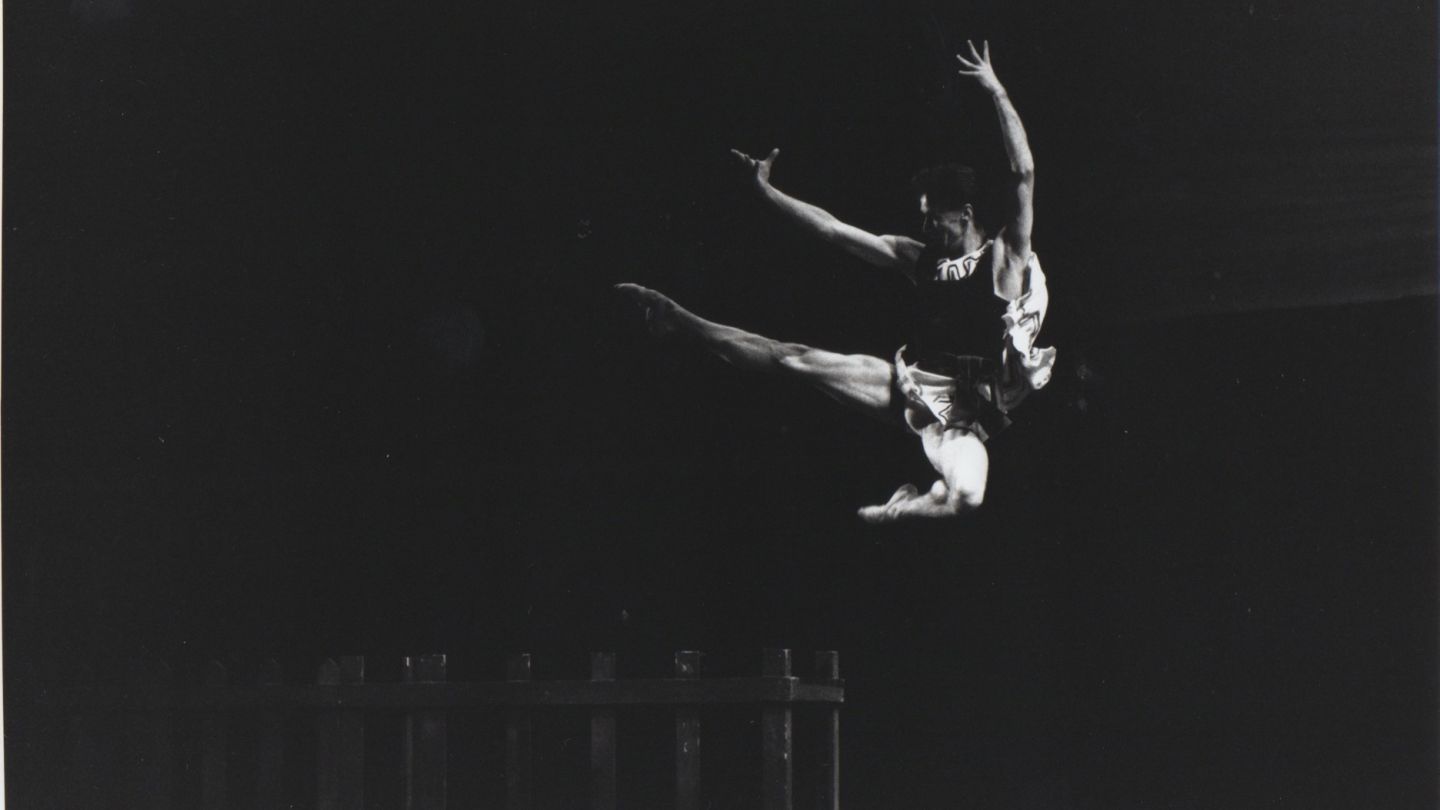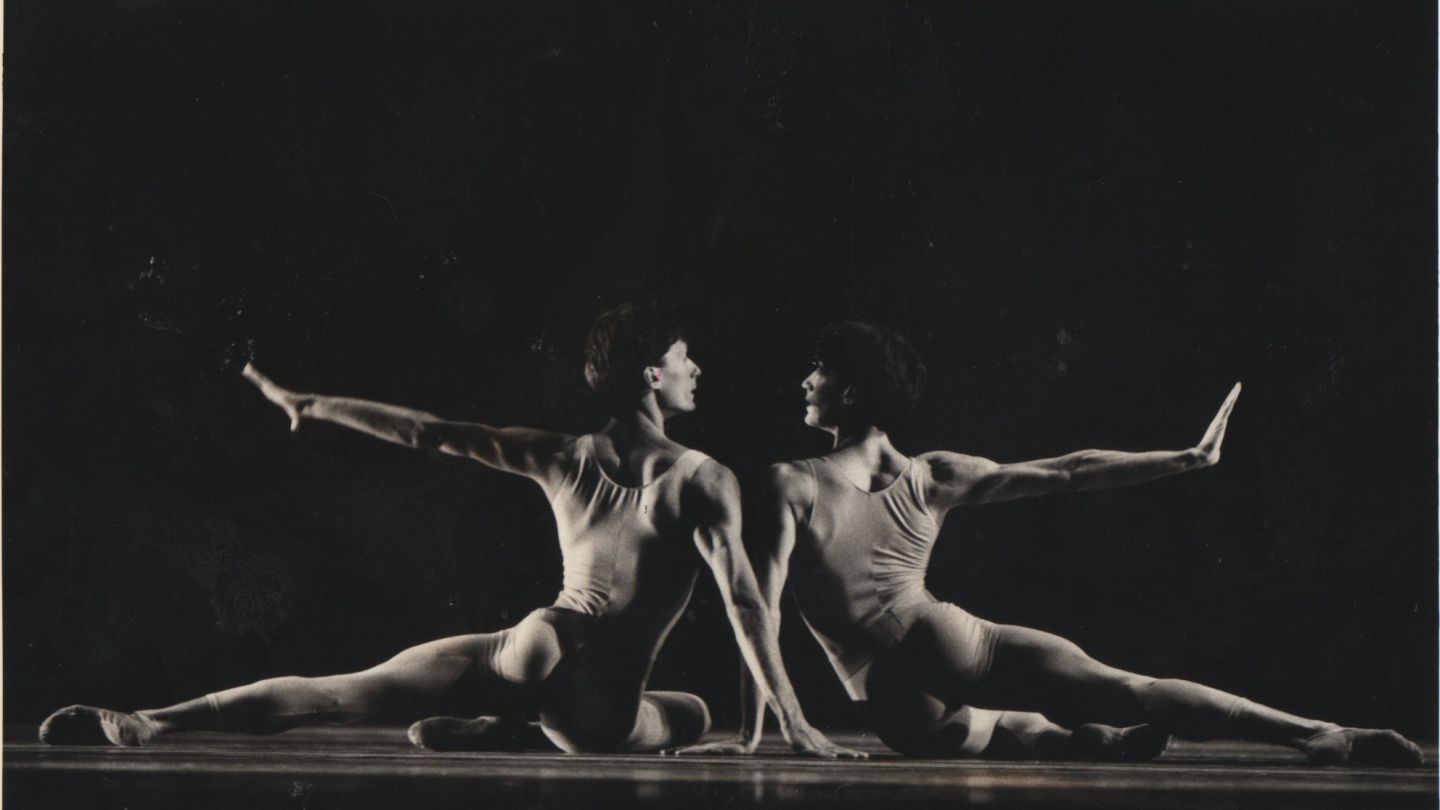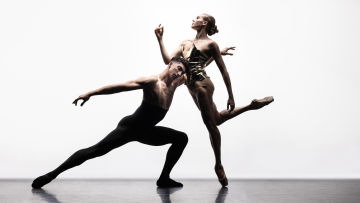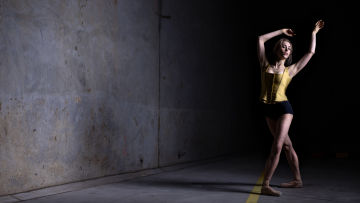Entrechats with Wim Broeckx
Wim Broeckx is a dreamer of many talents. When he’s not teaching our Pre-Professional Program dancers in the studio, he’s shooting and editing dance videos. Under his belt is also Principal dancer, Artistic Director, bicycle restorer, competition adjudicator, Dance Department Director and computer enthusiast. With so much passion to share, Wim talks through his lifelong journey of learning.

Where did your love of ballet originate?
Both my parents were academic school teachers growing up. My sister, twin brother and I attended the school my mother taught at in Antwerp, Belgium. My brother and I were skinny and light at the time, so the doctor suggested we do some gymnastics, and combined with my mother’s love of music, and the ballet education offered at the school – perfect!
Boys in ballet are always well liked, so I developed and continued through to high school. My sister had to stop due to limitations with her physicality, while my brother took his dancing more seriously. I was a bit of a dreamer and actually wanted to be a clown, while spending a lot of time making string puppets and creating artworks; painting, drawing, wood work. However, at 16 my ballet teacher told me I needed to seriously focus, start working or stop dancing. I woke up, smelt the coffee and started training more seriously.
How did you break into the industry?
In 1980, I went to the Prix de Lausanne competition and became a finalist, and simultaneously I was offered a place at the Royal Ballet of Flanders. However, early on I decided I wanted to also perform the big classical repertoire ballets, which they didn’t perform at the Royal Ballet of Flanders. After one year I moved onto London Festival Ballet (now the English National Ballet) and at age 21 joined the Dutch National Ballet. I was promoted to Principal Dancer about five years later, having gone through all the ranks, and I danced there until the end of my on-stage career, age 39, as I was asked to become Assistant Artistic Director of the Company.
During my career at Dutch National Ballet, I started teaching ballet and pas de deux classes jointly for both vocational schools in Amsterdam and The Hague. I also organised choreographic workshops for the Company.
What was one of the highlights of your stage career?
My identical twin brother was also a Principal dancer. He left Flanders and went to Berlin Staatsoper, continued his career in Munich Bayerishes Staatsballett, before moving on to Roland Petit Company in Marseille, France. He danced a couple years longer than me, retiring at 41 and became a Ballet Master in Scala Milano, before moving to Zurich as ballet master.
We were both very fortunate in our careers and danced as a guest with other Companies and on several international galas. We also regularly performed a pas de deux together – the first time, I learned the choreography from video, my brother flew into Amsterdam, we rehearsed it once together and then performed it on stage with the orchestra for a ballet Gala. Because we’re so similar in body, coordination and musicality, it’s kind of like dancing with your own body.

When did you take the leap in moving to Australia?
After finishing my job as Assistant Director of the Dutch National Ballet, I decided to leave the ballet world and take a year off to travel around Europe. During my travels I was offered a Director’s position at the Royal Conservatoire’s Dance Department in The Hague, Netherlands. I was active in that role for 10 years, until I was 50.
By then, I was married with two young kids, and I faced asking myself what I wanted to do next. I loved teaching students, so I decided to freelance as a guest teacher. My wife was Australian so I’d been going back and forth to Australia for some time. Through my network from the Prix de Lausanne (where I had been President of the Artistic Committee for four years) and the Dance department of the Royal Conservatoire, The Hague, I became an adjudicator for the Sydney Ballet Eisteddfod, on several occasions, while still living in Europe. This got me in contact with many Australian private schools.
We eventually decided to migrate in 2012. I began teaching in ballet schools and companies in Australia and New Zealand, which led to me teaching a few Company classes for Queensland Ballet and workshops for the Academy, followed by becoming an Associate Teacher for the Pre-Professional Program. From there, things escalated and since this year, I started as full-time Head of the Pre-Professional Program.
What’s your favourite part of teaching?
I love being in the studio – once a dancer, always a dancer! I like being physically busy and passing on my knowledge to the next generation. Ballet isn’t something you can teach from a book – you have to teach from the heart.
I like working with the Pre-Professional students in particular. My sons are more or less the same age, so I can relate to what they’re going through in their lives. Due to past network and interest in career preparation, I enjoy helping them identify their strengths and weaknesses and plan for their careers.
Tell us about some of your other interests.
I’ve always had little things I liked to do on the side. Growing up, my father had cameras and a darkroom at home, so I bought some cameras and started developing pictures when I was at the Ballet of Flanders. I’d go to classes, snap the photos, go home to print them at night, go to bed at 3am, get up and go to class, selling the pictures from the day before to the dancers.
Later on in the Netherlands I started finding old bicycle frames on the street, putting them back together and making bikes for other dancers. Around that time I got interested into computers too, and pushed my photography hobby to videography.
When I moved to Australia I realised I could combine my photography and teaching, career guidance skills to prepare students for, and make audition videos. I bought myself some gear and lately have been getting into making little promotional films and editing, doing showreels for dancers and playing around with editing software.
What advice could you offer to our young dancers?
Hard work is smart work. I’ve read once: “When talent doesn’t work hard, hard work beats talent”. You really need passion and if you don’t have it, then stop and do something else – you need to be a fighter to really want it! Put in your exercises, your effort in classes and go for it 100%.
Dream first, then fill in the path.
Enjoyed this article? Click here to read more Boys in Ballet Week content!
Images: Prodigal Son by George Balanchine & Les Intermittences du Coeur by Roland Petit.



